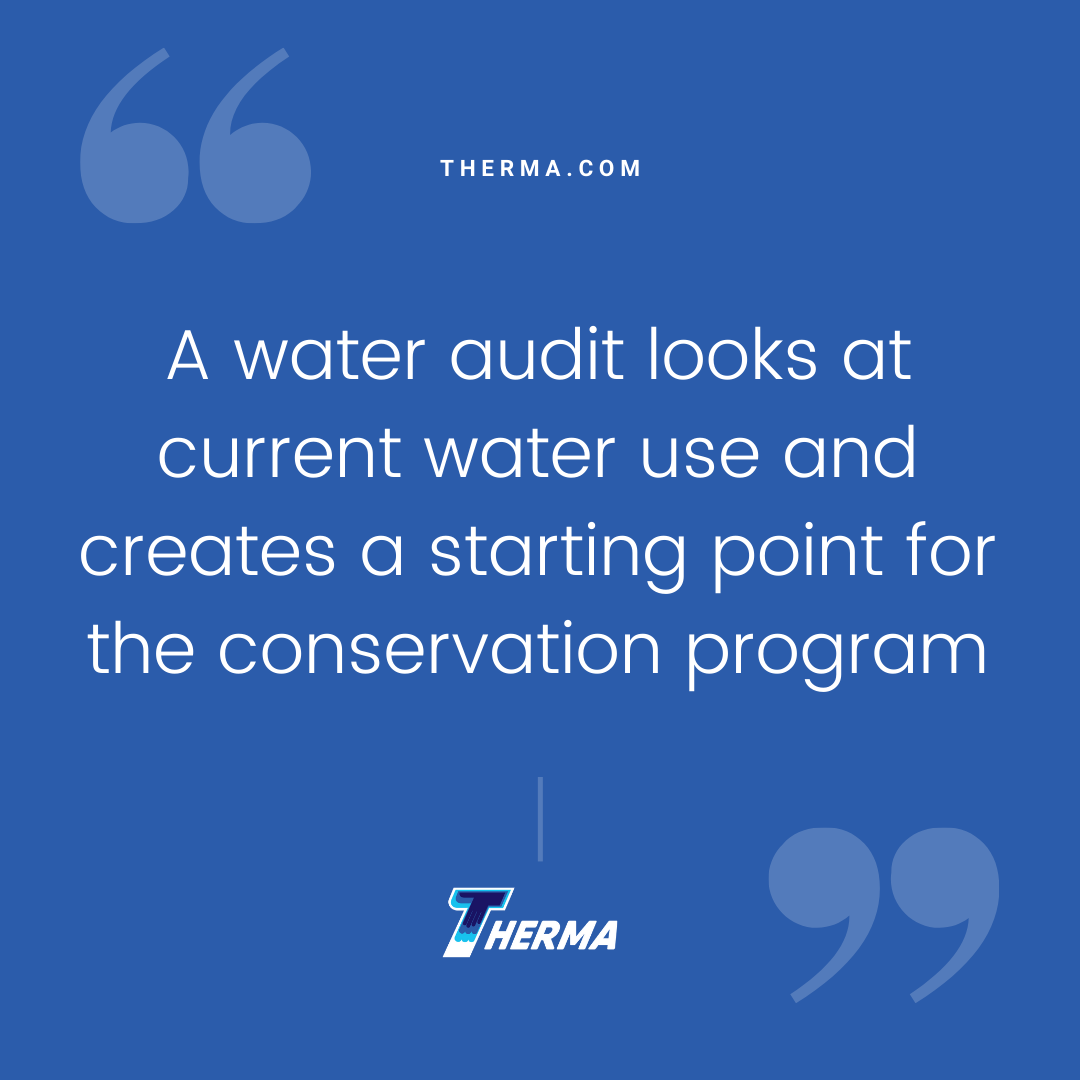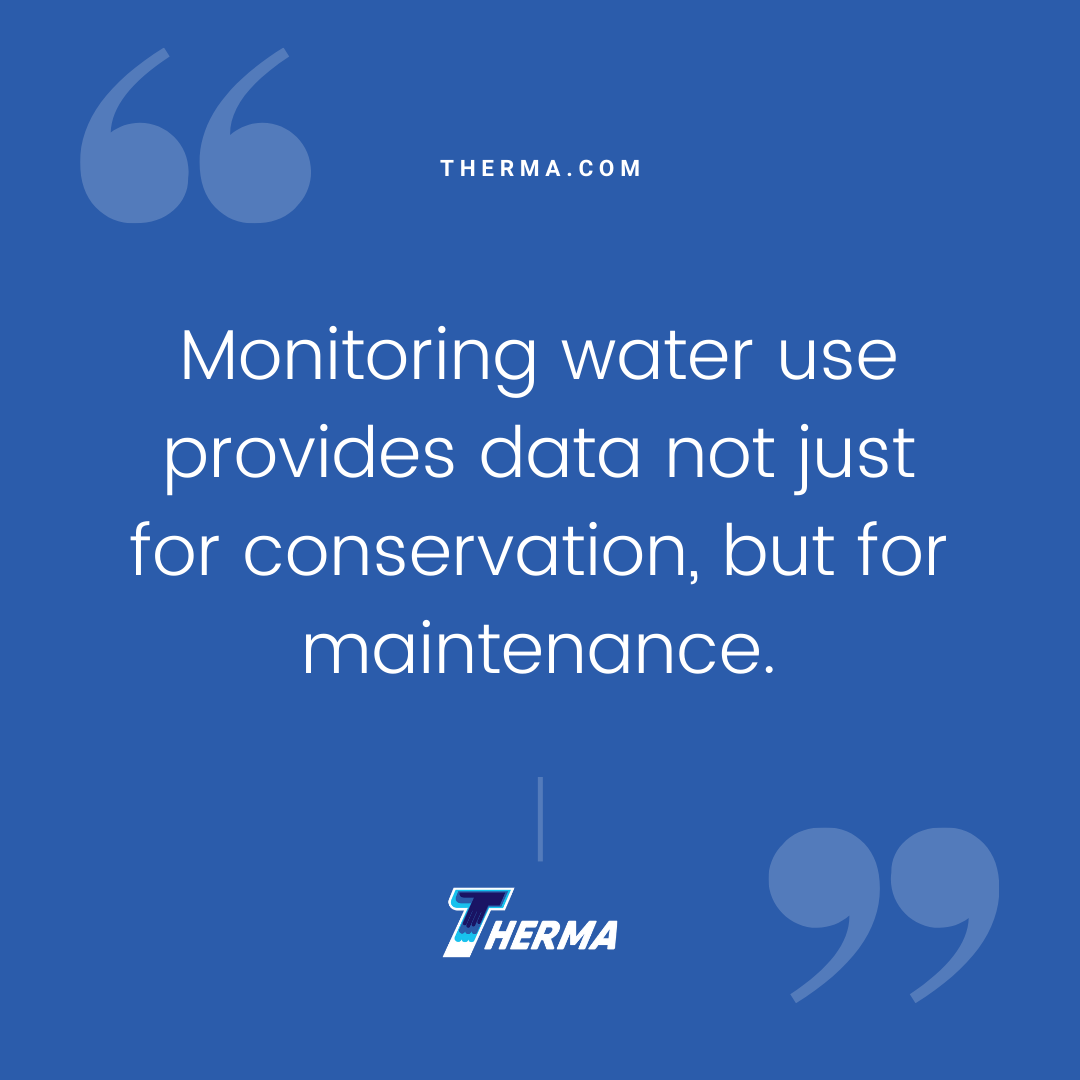Effective water conservation plans depend on accurate and thorough information. The first step for businesses looking to conserve water is a water audit. By knowing how much and where water is used, owners and managers can identify what improvements are needed.
What Is A Water Audit?
Water auditing is a process whereby an engineer or consultant audits your building’s water usage to identify ways to conserve water and energy.
Water utilities have honed the water audit process to identify sources of loss within their systems. Review of the general process that utility companies use can provide a basic understanding and guidelines for managers and owners as they work towards their own sustainability goals and save costs.
Water conservation programs can be divided into three stages: the water audit, improvement action items and evaluation. A water audit looks at current water use and creates a starting point for the conservation program. The information collected during the audit is used to develop a list of potential improvements, as well as metrics for use during the evaluation stage.
Here’s a deeper look into what the water audit process looks like and information that is gathered.
Gathering Information
The first part of the water audit is determining the facility’s baseline. Key questions to start with are:
Where is water used? Audits require a complete look at a facility. Some locations will immediately come to mind. Restrooms and HVAC systems are common early targets for many businesses. Depending on the facility, water also may be used for irrigation and mechanical or process equipment. Identify every point of use.
How much water is used at each of these points? Does the amount vary by time or season? Initial steps of an audit rely on estimates. Metering can be used for more accurate flow rates. Over time, data trends from regular meter readings also aid in identifying leaks or fluctuations in how water is being used.
Is there any water-efficiency equipment already in place? Include the location and details of special equipment or fittings which improve water efficiency. It is important to know how previous conservation actions are impacting the current state of water use in order to avoid duplicate action items. This information aids in evaluating the effectiveness of those previous actions.
Creating an Action Plan
Some actions require investment. Taking stock of current flow rates, locations, and equipment is a must in developing cost-effective action plans that maximize ROI.
Where is there waste? The data collected in the first part of the audit should reveal sources of waste, including potential leaks. Given the impact of leaks on property and occupant health, identifying and repairing them provides an immediate return on the time spent gathering water use information.
What water use goals will the plan achieve? Decide what to achieve through the water conservation plan. Establish long term goals as well as immediate goals. A good step is to make water use a priority through preventive maintenance (PM). Coordinating PM with water or energy conservation reinforces your organization’s commitment to reaching long-term goals.
What options are available to meet those goals? Develop a list of potential actions and identify the best options given any financial or mechanical constraints. With actions narrowed down, consider how best to track and measure their effectiveness.
Who will be responsible for driving conservation initiatives? Avoid the common mistake of not assigning a point of contact responsible for monitoring and directing conservation efforts. While many people will need to assist with individual action items, someone needs to coordinate how the plan is rolled out and to maintain momentum so that the goals are met.
How often will data and goals be reviewed and evaluated for progress? Effective programs are dynamic and focus on continuous improvement. Establishing expectations before the plan is put into action adds accountability. After evaluation, an updated audit provides new information to further refine conservation efforts.
Benefits of Water Audits
Water conservation has many benefits for businesses. By cutting waste and reusing water when possible, facilities can lower utility and energy bills and reduce the quantity of chemicals needed to treat water for heat transfer equipment. Monitoring water use provides data not just for conservation, but for maintenance. Tracking changes in flow rates is a method used to reduce the risk for property damage from leaks and to improve occupant health and productivity.
Therma offers water and energy audit services to help managers and owners meet their goals as well as assisting with LEED certification.
Patti draws on her background as a chemical engineer to share information with readers on technology, manufacturing, and construction.
Sources
Facilities Net – How Does a Water Audit Work
Facilities Net – Steps in a Water Audit
Moen – How to Conduct a Water Audit to Save Your Facility Money
Maryland – Developing and Implementing a Water Conservation Plan









